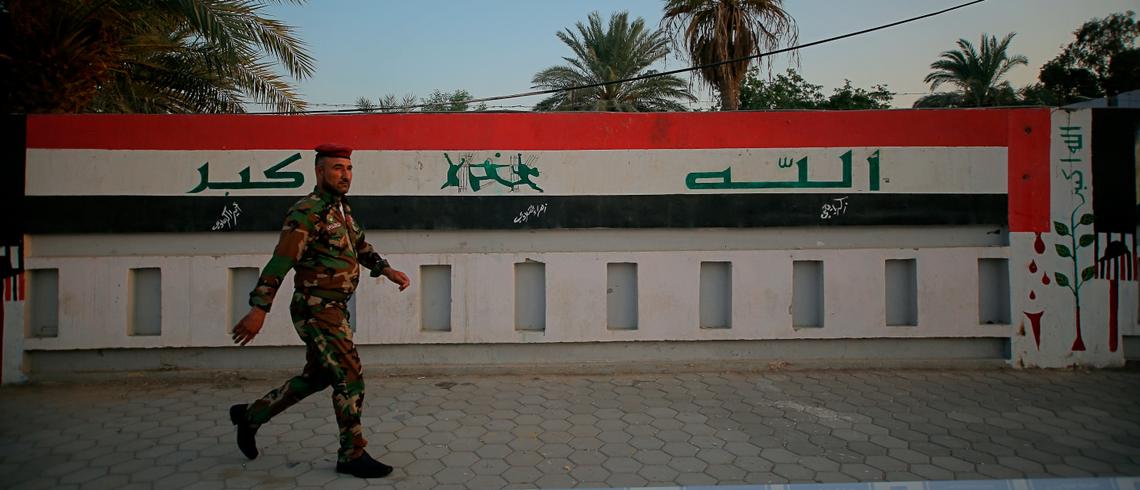In many ways, it is incredible how the standard news cycle works and in a manner that seems to blight much of its audience with a collective amnesia.
Like a theatrical production, a good news story usually covers an isolated event with main characters, protagonists and antagonists. Depending on the political leanings of the organisation covering the story, the event is picked apart by commentators, many of whom are genuine experts but have mere minutes to explain a complicated event in isolation of its broader context.
In modern Iraq, no story and no “main character” elicits as much collective amnesia in the media – even amongst those who ought to know better – than the saga of the Shia cleric, militia commander, and newly anointed political leader that is Muqtada al Sadr.
It is not uncommon these days to see reports and analytical pieces describing Sadr as the United States’ “best hope” in Iraq. He is also described as an “Iraqi nationalist,” and as the man who may finally “break Iran’s grip” on Iraqi politics. It is almost laughable in its naivete, or a more cynical interpretation might suggest that it was intentional obfuscation to polish Sadr’s image.
Of course, and as any Iraqi or legitimate expert will tell you, Sadr was once deemed a “firebrand,” a “radical,” and his militia even “terrorists” by not only the mainstream press, but also the governments of both the United States and its Iraqi client state. It was not uncommon to see these phrases bandied about the media, and for good reason.
Sadr and his men were closely linked to Iran’s Islamic Revolutionary Guard Corps’ (IRGC) Quds Force. These relations were cultivated when Sadr was sheltered by Iran after his father, Grand Ayatollah Muhammad al Sadr, and two of his brothers were shot by unknown assassins in Najaf in 1999.
Early in the American-led invasion of Iraq in 2003, Sadr launched his Jaysh al Mahdi militia, better known as the Mahdi Army in English, with extensive Iranian backing.
Sadr’s militia was renowned for its use of sectarian violence, kidnapping Sunnis off the street for no other reason than their faith, and either ransoming them back to their families or, as often occurred, torturing them to death even after the ransom was paid.
Two of his top lieutenants, Qais al Khazali and Akram al Kaabi, later established their own offshoot militias called Asaib Ahl al Haq and Harakat Hezbollah al Nujaba respectively. Khazali was arrested by British special forces and the transcripts of his interrogation reports have since been declassified in which, among other things, he admits to the brutal sectarian tactics he employed along with his former master and even offered to collaborate with the US-led coalition.
At the height of the sectarian violence in 2006, which was spearheaded by the likes of Sadr, Shia death squads were responsible for the lion’s share of a horrifyingly immense 655,000 deaths.
Sadr is therefore far from Iraq’s saviour. Yet mass amnesia seems to have set in, and with predictably horrific results for the Iraqi people.
How did the world forget?
While far from being the only perpetrator, Sadr is unique in that he underwent an almost wholesale makeover at the hands of the international media and think tank “experts” keen to dish out their latest hot take on a country they have scarcely, if ever, understood.
Sadr started off as a man whose death squads not only murdered countless thousands of Iraqis simply for being called Abu Bakr, Omar, or even Talha – common Sunni names, but even assassinated American journalists who uncovered the Sadrists’ involvement in corruption in Basra in 2005.
This was two years after Sadr endorsed a religious decree allowing looters who rampaged across Iraq in the aftermath of the invasion to keep their ill-gotten gains so long as they donated a fifth – known as the khums in Shia jurisprudence – to Sadr and the Shia clergy.
He has since transformed into an apparent unifier, an “anti-corruption” political icon, and – probably most hilariously were it not for its seriousness – as the man who can finally stand up to Iran and undermine its pernicious control over Iraqi state institutions. In short, he has had the sort of facelift ageing popstars long past their glory years could only hope to dream of.
The reason why this is so subversive is that the media and experts are trusted by the wider public to inform them with independent and trustworthy analysis. This, in many ways, is a sacred duty and public service. Nevertheless, and on the whole, they have either lazily or cynically misled a global audience for the sake of preserving a status quo that the Iraqi people themselves – Sunni, Shia, and otherwise – have long rejected.
If the earlier Sunni-led protest movements up until late 2013, the later Shia-led demonstrations since 2019, and the disastrously low turnouts for elections no one believes in anymore have not shown how Iraqis writ large have rejected the political process imposed on them since 2003, then nothing will convince these international observers and commentators to abandon their reckless attempts to polish the image of a man who has the blood of thousands of innocents on his hands.
It is actions like these that have Iraqis increasingly believing that they are entirely on their own in their struggle for freedom from violence, oppression, and sectarianism.
Sadr can never and will never be the man to extract Iraq from darkness into light, rather he will plunge it ever deeper into the brutal abyss it has been stuck in since 2003.
Source (Click Here)


 RSS Feed
RSS Feed